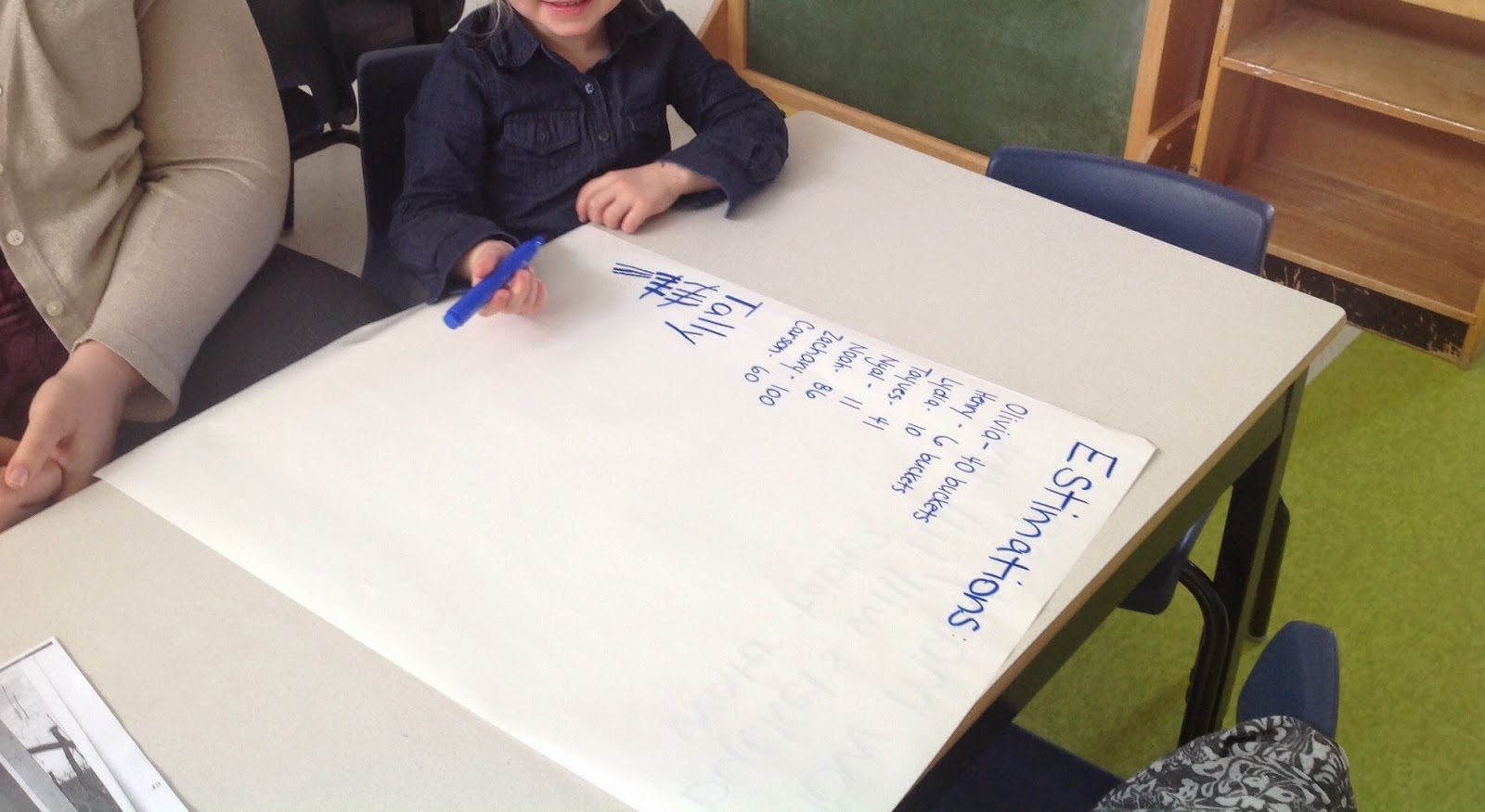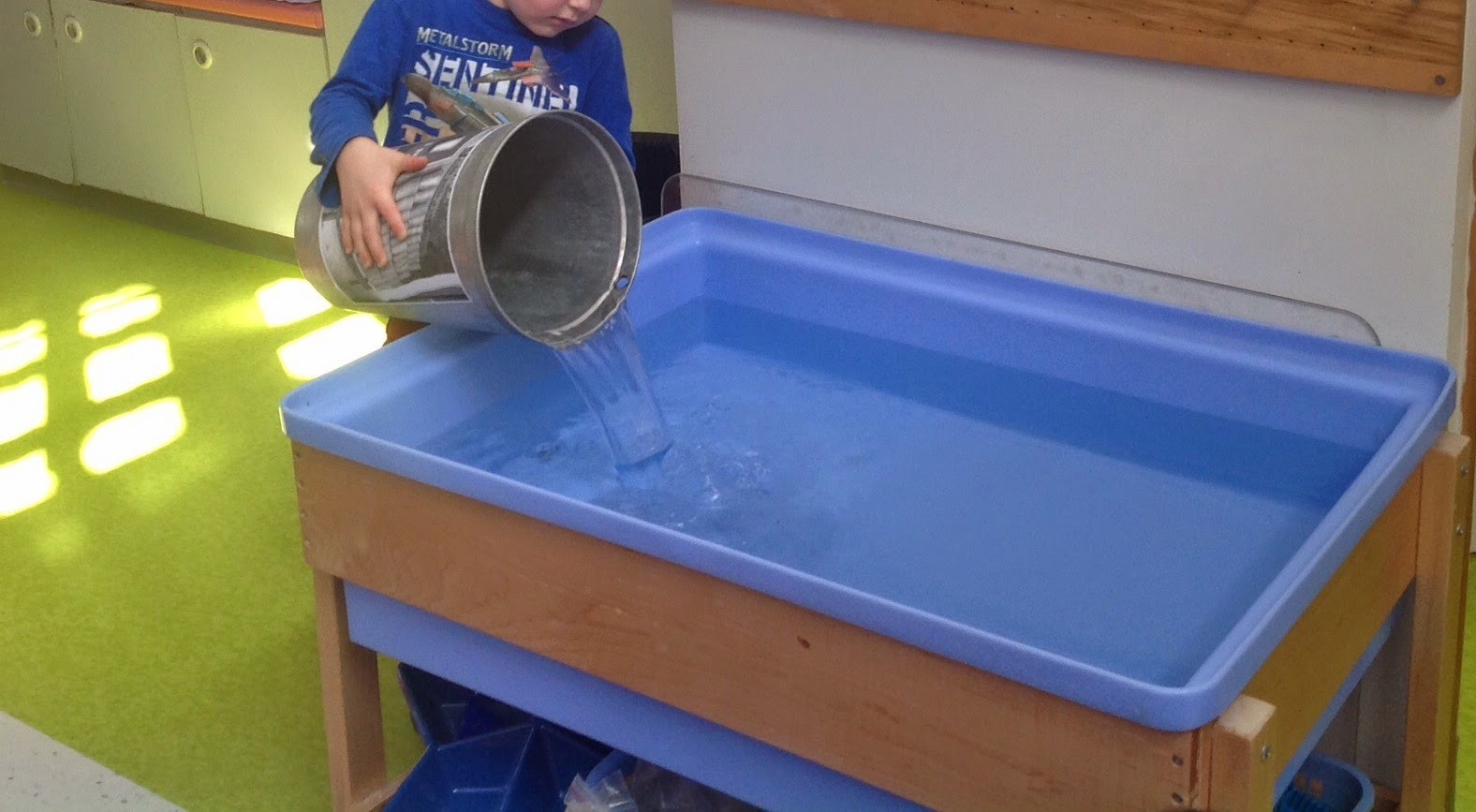Proulx Maple Farm
Around the time we first started planning the trip, I was in my local hardware store and spotted the supplies needed to tap your own trees. If we had mature maple trees on our yard, I would have attempted to try our hand at it. Nonetheless, I picked up those supplies and brought them to class to pique their curiosity. Mission accomplished.
 |
| Demonstrating how they think the bucket hangs from the tree |
 |
| Exploring the spile |
We read a few books on the topic of sugaring off, and were surprised to learn that it takes 40 buckets of sap to produce 1 bucket of yummy, golden syrup.
40!
That's a big number! We took time during Focus Groups to explore that number.
 |
| Counting out 4 rows of 10 |
 |
| Counting to ensure there are really 40 |
 |
| Using tens frames and bottle caps to count to 40. |
 |
| Using blocks & tens frames to represent 40 |
Our learning carried over to the water table, where it magically turned
into an "evaporator". We wondered if the "evaporator" had the
capacity to hold 40 buckets worth of sap.
Estimates were recorded, then we explored!
 |
| Literacy & Numeracy at play |
 |
| That's a lot of "sap"! |
 |
| How do we get sap flowing through the spile? |
 |
| Taking a tally during centre time |
By the time our field trip rolled around, the children were so excited. Proulx Farm had a lot to offer! A presentation outside identified the way sap has been collected throughout history.
Left (large wooden spile and bucket out of a log)
Right (small wooden spile and bucket out of wood)


Left (metal spile and bucket)
Right (plastic spile and aluminum bucket, OR tubing running from tree to tree)
 |
| Rustic "Sugar Shack" |
 |
| Evaporator at work |
 |
| Steam rising up, beyond the rafters |
A connection was made to the water cycle (evaporation) as we watched the steam rise up and out of the building.
It was a full day! We enjoyed our pancakes and smothered them in delicious maple syrup - what a treat! Then we took a wagon ride back to the play structures and animal barn. A few of our little friends fell asleep on the bus ride home. What a terrific first field trip, and sugaring off season!
Thank you for visiting our atelier.
Thank you for visiting our atelier.















